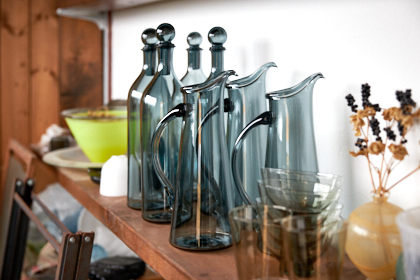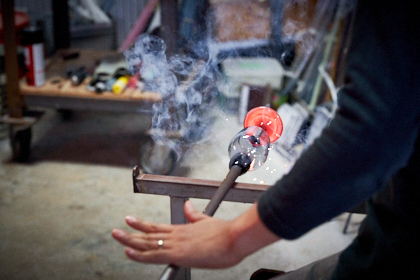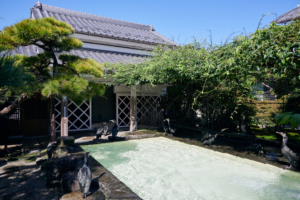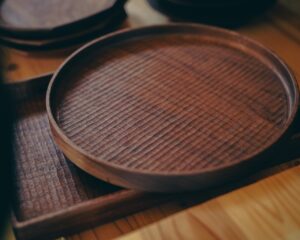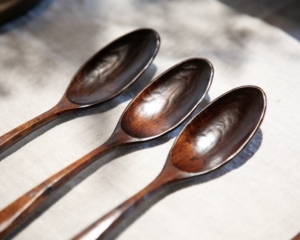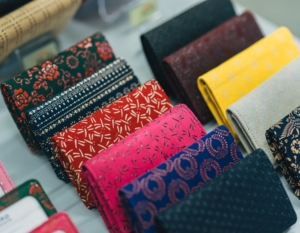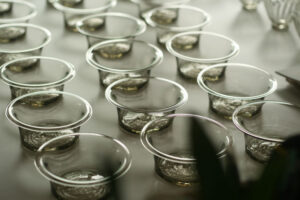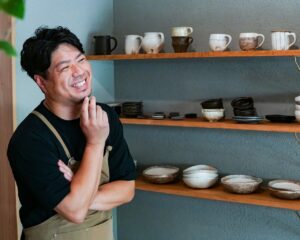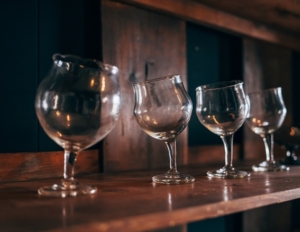Glass crafts made while feeling the nature of Noto
Nanao Bay, where Notojima Island is located, is unaffected by rough seas despite its location on the Sea of Japan, with only a few ripples, like a lake, giving the impression that sea birds and fish are spending their time leisurely.Glass artist Kota Arinaga continues to create his works in his studio facing Nanao Bay on this naturally rich Noto Island.Since the Notojima Glass Art Museum of Ishikawa Prefecture is located just nearby, one might think that he came to this area through that connection, but he says, “I inherited this house from a relative who was using it.
Originally from Osaka, I studied glass art at a university in Kurashiki and worked at glass studios in Fukushima and Niijima in Tokyo before coming to Notojima four years ago.” The air is clear and the only sounds are the wind, waves, and birdsong.The gently rolling hills of the island are covered with rice paddies and fields, and because there is no heavy snowfall even in winter, the island is blessed with a variety of crops in all four seasons.The starry sky is beautiful at night because there are few streetlights, and the area is surrounded by nature so rich that it is like a natural planetarium, making one sigh. The Noto Peninsula used to be called an “isolated island on land,” but recently the transportation network has developed, and Kanazawa is only an hour away by car, and you can reach Tokyo from Noto Airport in no time.It is the best environment for me to concentrate on my work without overworking myself.” (Mr. Arinaga) Displayed in the living room is a delicate glass vessel that is almost scary to touch.The glass, which looks like fabric, overlaps each other, softly diffusing the ambient light and creating an indescribable nuance with a veil of gentle colors on the transparency of the glass.
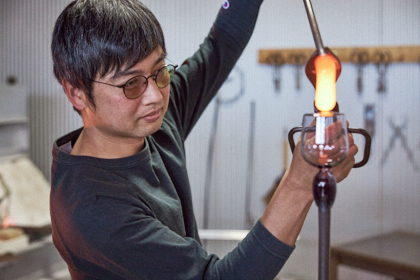
Aiming for both art and practicality
The series named “gauze,” as the name suggests, appears to be made of a soft, gauze-like fabric enclosed in glass.When I visited the glass studio attached to his home, I found the glass kiln burning red-hot.He said he usually stays here to work on his pieces.
The earlier piece was nice, but I also like this kind of rustic vessel,” said Nakata.
Hidetoshi Nakata’s attention was caught by the casual glasses and jugs.These pieces made of colored glass were indeed simple and rustic, but they showed both delicate shapes and a handmade flavor.They had a different feel from the works seen in the living room.
It is not easy to balance the pursuit of beauty as an artist and the pursuit of practicality as a craftsman,” says Arinaga.However, watching Mr. Arinaga silently blowing and shaping glass, it seemed as if the two existed without discomfort.
